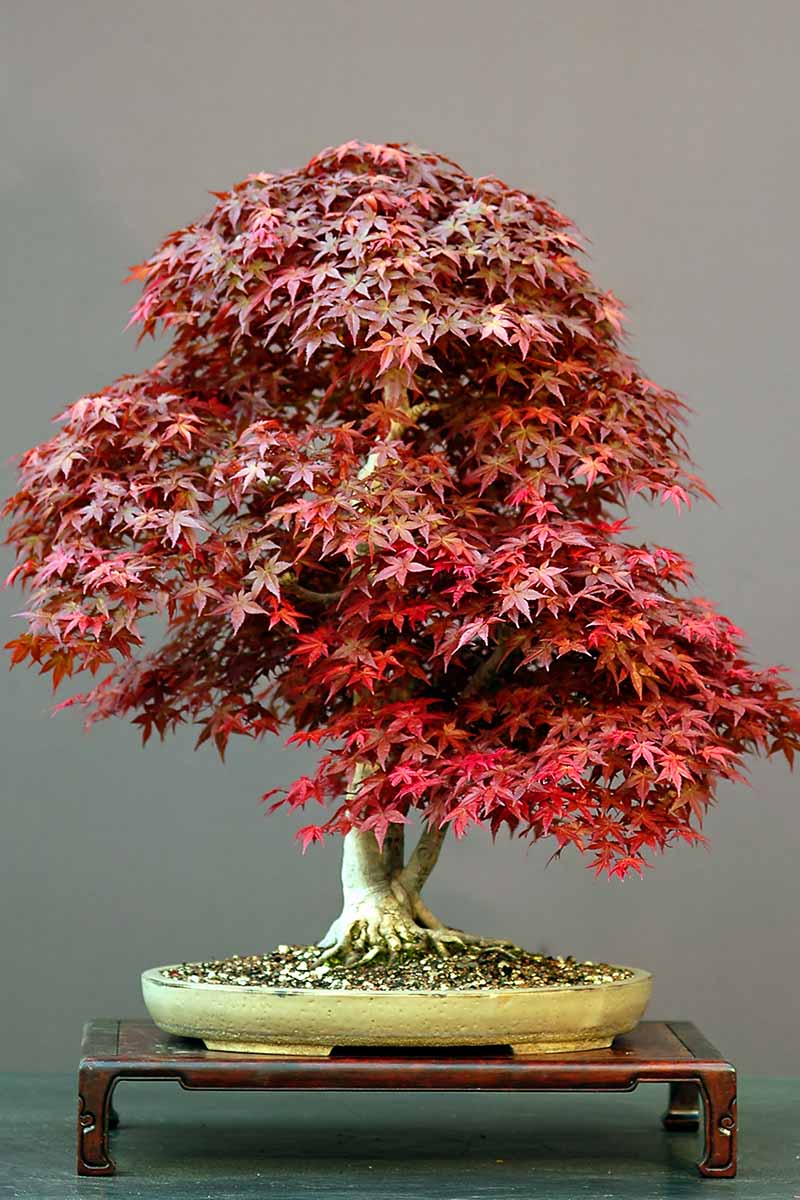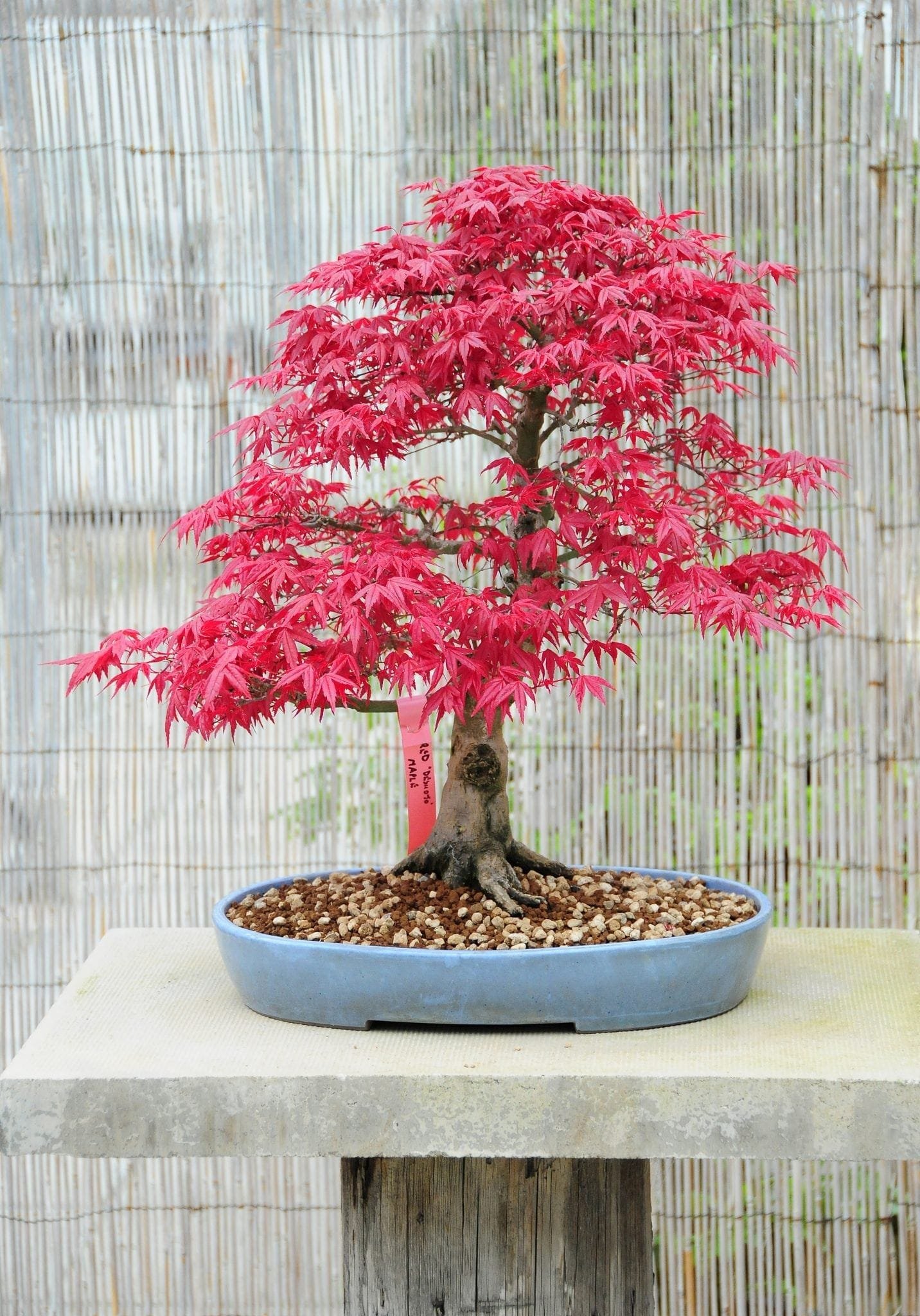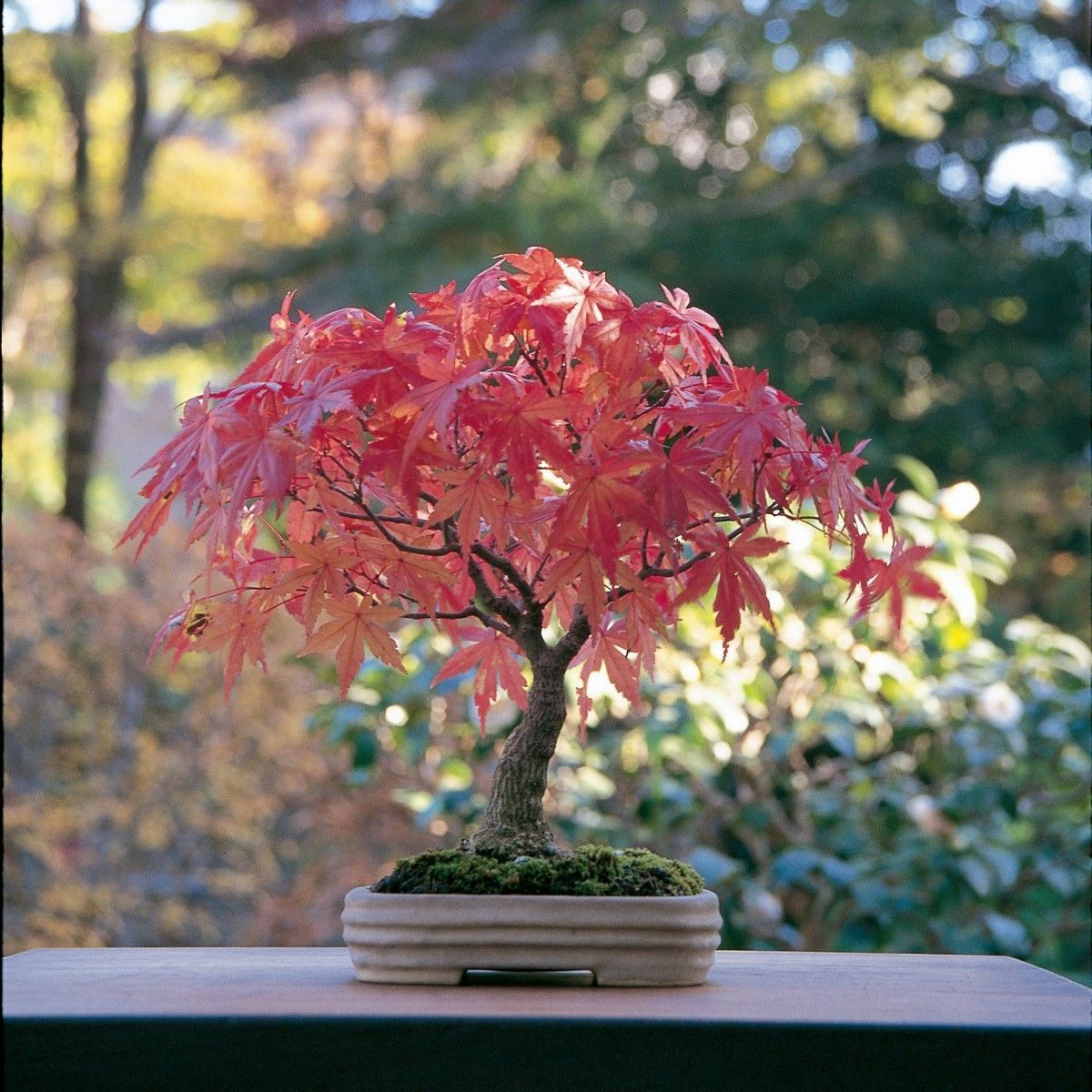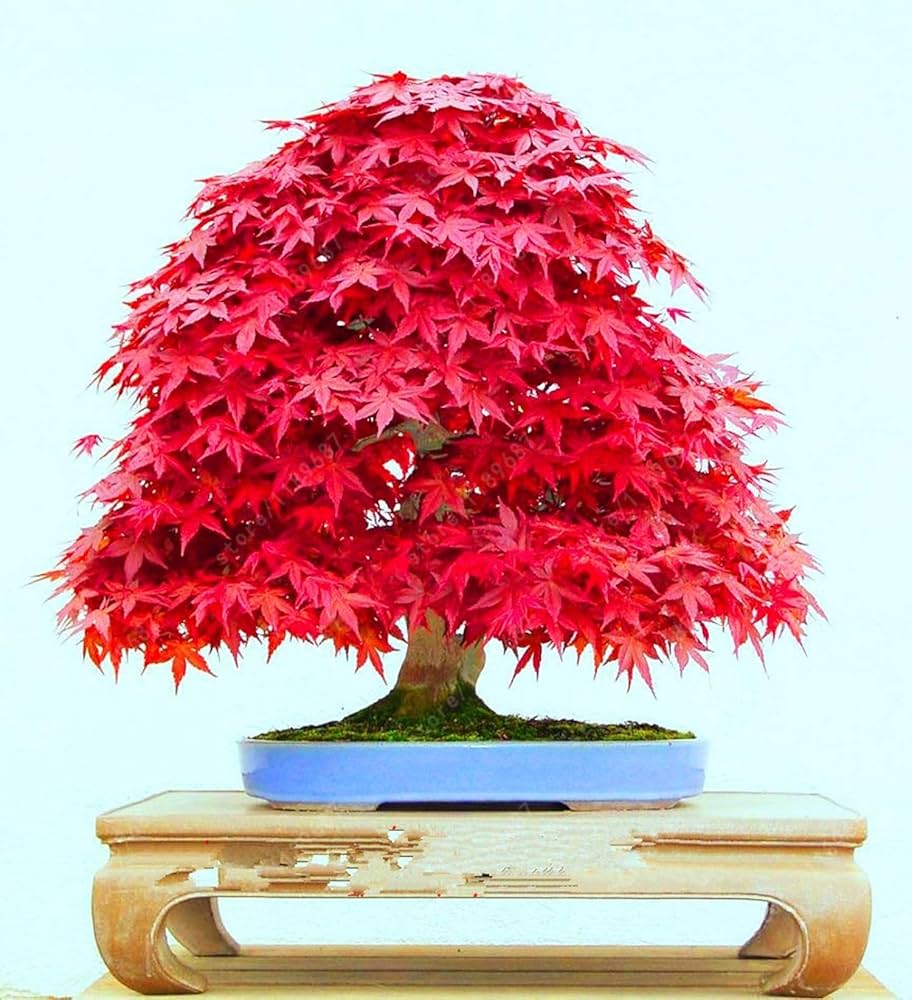Discover the captivating beauty of Acer Palmatum, also known as Japanese Maple Bonsai. Explore its unique characteristics and learn how to care for and appreciate its elegance in your garden or indoor space.
The captivating beauty of Acer Palmatum, also known as Japanese Maple Bonsai. We’ll explore the unique characteristics of this exquisite tree and discuss how it can bring a touch of elegance to any garden or indoor space. From its stunning foliage colors to its delicate yet striking branches, you’ll learn why the Acer Palmatum is highly sought after by bonsai enthusiasts and nature lovers alike. Whether you’re a beginner or experienced in bonsai cultivation, this article will provide insights and tips on how to care for and appreciate the beauty of the Japanese Maple Bonsai. So, let’s embark on a journey to discover the enchanting world of Acer Palmatum.

The Beauty of Acer Palmatum: Japanese Maple Bonsai
Understanding Acer Palmatum
Acer palmatum, more commonly known as Japanese Maple, is a species of tree native to Japan, China, and Korea. It belongs to the family Sapindaceae and is highly regarded for its ornamental value. With its delicate foliage, striking colors, and graceful appearance, Acer palmatum has become a popular choice for bonsai enthusiasts around the world.
Overview of Acer Palmatum
Acer palmatum is a deciduous tree that can grow up to 10 meters in height, although there are dwarf cultivars that are more suitable for bonsai cultivation. Its leaves are palm-shaped, with deep lobes and vibrant colors that range from red and orange to yellow and green. The tree’s bark is smooth and grayish, adding to its visual appeal.
Characteristics of Acer Palmatum
One of the most distinctive characteristics of Acer palmatum is its ability to change colors throughout the seasons. In the spring, new leaves emerge in shades of light green, gradually transforming into vibrant reds and oranges during the fall. This natural color change creates a stunning display of hues, making it a favorite choice for bonsai enthusiasts.
Another characteristic that makes Acer palmatum ideal for bonsai is its fine branching pattern. The trunk and branches of the tree develop a delicate, gnarled appearance over time, adding to its overall aesthetic appeal. This fine branching also allows for intricate shaping and pruning techniques, essential aspects of bonsai cultivation.
Varieties of Acer Palmatum
Acer palmatum has numerous varieties, each with its unique characteristics and growth habits. Some popular cultivars include ‘Bloodgood,’ which features deep red foliage throughout the year, ‘Sango kaku,’ known for its vibrant coral-colored bark, and ‘Dissectum,’ which has finely divided, lacy leaves. Each variety offers different possibilities for bonsai styling, allowing enthusiasts to explore a wide range of artistic expressions.
Importance of Acer Palmatum in Japanese Culture
In Japanese culture, Acer palmatum holds significant importance. It has been treasured for centuries, revered as a symbol of grace, strength, and beauty. The tree’s stunning colors and graceful form have inspired many artists and poets, who have incorporated its image into various art forms, including paintings, ceramics, and literature.
The Japanese Maple is also closely associated with the notion of tranquility and serenity, which is a fundamental aspect of Japanese aesthetics. Its presence in traditional Japanese gardens, often combined with water features and other natural elements, creates a peaceful atmosphere that promotes contemplation and relaxation.
Introduction to Japanese Maple Bonsai
What is Bonsai?
Bonsai is the art of growing miniature trees in pots, capturing the charm and essence of larger, mature trees in a compact and artistic form. It originated in China over a thousand years ago and later spread to Japan, where it developed into a refined and highly regarded art form. Bonsai involves careful cultivation, pruning, and shaping techniques that require deep understanding and appreciation for the tree’s natural growth patterns.
Origin and History of Japanese Maple Bonsai
The art of Japanese Maple bonsai has its roots in traditional Chinese bonsai cultivation. Japanese Zen monks, who were studying Buddhism in China during the Tang dynasty, were captivated by the art form and brought it back to Japan around the 12th century. Over time, Japanese bonsai artists began to incorporate their unique aesthetic and cultural sensibilities, leading to the development of distinct Japanese bonsai styles, including the Japanese Maple bonsai.
Distinctive Features of Japanese Maple Bonsai
Japanese Maple bonsai, as the name suggests, focuses on cultivating and shaping Acer palmatum trees into miniature representations of their larger counterparts. The distinctive features of Japanese Maple bonsai include the tree’s elegant form, finely textured leaves, and the vibrant colors that the species is renowned for. These features, combined with careful shaping and pruning, result in a bonsai that embodies the essence and beauty of Japanese Maple trees.
Artistic Significance of Japanese Maple Bonsai
Japanese Maple bonsai is not only an art form but also a medium for self-expression and contemplation. Creating and caring for a Japanese Maple bonsai requires patience, skill, and an understanding of the tree’s unique characteristics. The process of training and shaping the tree allows the artist to express their creativity and appreciation for nature’s beauty, while also providing a meditative experience that fosters a deeper connection with the tree and its surroundings.
Cultivating Acer Palmatum as Bonsai
Choosing the Right Acer Palmatum Variety
When choosing an Acer palmatum variety for bonsai cultivation, it’s essential to consider the specific characteristics and growth habits of each cultivar. Some varieties, such as ‘Dissectum,’ are more suitable for cascade or broom styles, while others, like ‘Bloodgood,’ work well for formal upright or informal upright styles. Consider factors such as size, leaf shape, and color change to select a variety that aligns with your artistic vision.
Nurturing Acer Palmatum Bonsai
Proper care is crucial for the health and development of Acer palmatum bonsai. This includes providing adequate sunlight, water, and nutrients. Most varieties of Acer palmatum prefer partial shade, especially during the hottest parts of the day. Watering should be done regularly, ensuring that the soil remains moist but not waterlogged. Fertilizing the bonsai with a balanced, slow-release fertilizer helps maintain its vigor and overall health.
Pruning and Shaping Techniques
Pruning and shaping are integral parts of bonsai cultivation, allowing the artist to create and maintain the desired form and design of the tree. When pruning Acer palmatum bonsai, it’s essential to remove any dead, damaged, or unwanted branches while preserving the tree’s natural aesthetic. Wiring techniques can be applied to guide the growth and shape of branches, giving the bonsai its desired form.
Understanding Soil and Watering Needs
Acer palmatum bonsai thrives in well-draining, moisture-retentive soil. A mixture of akadama, pumice, and lava rock is commonly used in bonsai soil mixes to provide adequate drainage and nutrient retention. The bonsai should be watered thoroughly, ensuring that the water saturates the entire root mass. However, it’s crucial to avoid overwatering, as excessive moisture can lead to root rot and other fungal diseases.
Appreciating the Beauty of Japanese Maple Bonsai
Aesthetic Elements of Japanese Maple Bonsai
Japanese Maple bonsai showcases several aesthetic elements that make it highly desirable. The delicate foliage of Acer palmatum, with its intricate shapes and finely textured leaves, creates a sense of elegance and refinement. The fine branching pattern and gnarled trunks add further depth and interest to the overall composition. These aesthetic elements combine to create a bonsai that is both visually striking and emotionally captivating.
Seasonal Transformations and Color Variations
One of the most enchanting aspects of Japanese Maple bonsai is the seasonal transformations it undergoes. As with all Acer palmatum trees, the leaves of the bonsai change colors throughout the year. In spring, the new foliage emerges in shades of green, gradually transitioning to vibrant reds, oranges, and yellows during the fall. This ever-changing color palette provides an ever-evolving visual display that captivates and fascinates the viewer.
Symbolism and Cultural Significance
Japanese Maple bonsai holds cultural significance and symbolism in Japanese society. The tree’s colors and delicate form have been associated with the transient beauty of life and the impermanence of existence. It is a reminder to appreciate the present moment and find beauty in the fleeting nature of time. Japanese Maple bonsai also symbolizes strength and resilience, as the tree endures through the changing seasons and represents the enduring spirit of nature.
Japanese Maple Bonsai in Landscape Design
Japanese Maple bonsai is not only appreciated as an individual artistic expression but also as part of larger landscape designs. In traditional Japanese gardens, these miniature trees are often incorporated to create a sense of scale, balance, and harmony. Placed alongside other elements such as rocks, water features, and winding paths, Japanese Maple bonsai adds a touch of natural beauty and tranquility to the overall landscape.

Care and Maintenance of Acer Palmatum Bonsai
Sunlight and Temperature Requirements
Acer palmatum bonsai thrives in partial shade, preferably receiving morning sun and afternoon shade. It is essential to protect the bonsai from strong, direct sunlight during the hottest parts of the day, as it can scorch the delicate foliage. While Acer palmatum is generally cold hardy, extreme temperatures should be avoided, as they can damage the tree. Providing a suitable environment that mimics its natural habitat ensures the bonsai’s health and vitality.
Fertilization and Nutrient Balance
Fertilizing Acer palmatum bonsai is essential to promote healthy growth and vibrant foliage. A balanced, slow-release fertilizer formulated specifically for bonsai should be applied during the growing season, following the manufacturer’s instructions. Regular fertilization ensures that the bonsai receives the necessary nutrients for optimal development. However, it’s crucial not to over-fertilize, as this can cause root burn and other adverse effects.
Pest and Disease Management
Like all plants, Acer palmatum bonsai is susceptible to pests and diseases. Common pests that can infest the bonsai include aphids, scale insects, and spider mites. Regular inspection and early detection are key to preventing infestations and minimizing damage. In case of pest infestation, appropriate insecticides or horticultural oils specifically made for bonsai can be applied. Additionally, maintaining proper hygiene, such as removing fallen leaves and regularly cleaning the bonsai, can help prevent the spread of diseases.
Restyling and Repotting Tips
Restyling and repotting are occasional tasks that help maintain the health and aesthetics of Acer palmatum bonsai. Restyling involves pruning and wiring to reshape the tree, allowing the artist to create new designs and expressions. Repotting, on the other hand, involves carefully removing the bonsai from its container, trimming the roots, and replanting it in fresh soil to promote healthier growth. Restyling and repotting should be carried out at appropriate times during the tree’s growth cycle to minimize stress.
Importance of Patience and Steadfastness
Long-term Commitment in Bonsai Cultivation
Bonsai cultivation, including Japanese Maple bonsai, requires a great deal of patience and dedication. A bonsai tree is not merely a decoration but a living work of art that requires ongoing care and attention. It is a long-term commitment that involves nurturing and shaping the tree over many years. By investing time and effort, the bonsai artist can witness the tree’s growth and development, creating a lasting connection and sense of accomplishment.
Observing and Responding to the Tree’s Needs
Cultivating a Japanese Maple bonsai demands a deep understanding of the tree’s needs and the ability to respond accordingly. By observing the bonsai closely, the artist can determine when it requires watering, fertilization, or pruning. This attentive approach allows the artist to develop a profound relationship with the tree, understanding its unique characteristics and responding to its changing needs.
Reflections on the Artistic Process
The process of cultivating and caring for Acer palmatum bonsai offers numerous opportunities for reflection and personal growth. It teaches the artist about the evolution of nature, the importance of balance and harmony, and the concepts of imperfection and beauty. Creating a Japanese Maple bonsai offers moments of contemplation and self-discovery, allowing the artist to connect with nature on a profound level.
Lessons in Contemplation and Serenity
The art of Japanese Maple bonsai embodies the principles of contemplation and serenity. As the artist works on shaping and nurturing the bonsai, they immerse themselves in the present moment, finding peace and tranquility. The process of creating and observing the bonsai encourages reflection and introspection, fostering a sense of calm and stillness that can be carried over into other aspects of life.
:max_bytes(150000):strip_icc()/growing-japanese-maple-bonsai-5085314_02-d3f41f2a659e4d1ba5d1eb2b53978277.jpg)
Popular Acer Palmatum Bonsai Styles
Formal Upright (Chokkan)
Formal Upright style, also known as Chokkan, is characterized by a straight, upright trunk and symmetrical branching. The branches gradually decrease in size as they ascend the tree, creating a sense of balance and harmony. When applied to Acer palmatum bonsai, the Formal Upright style highlights the tree’s natural beauty and elegance, showcasing its delicate foliage and fine branching structure.
Informal Upright (Moyogi)
The Informal Upright style, or Moyogi, is characterized by a more natural and informal appearance compared to the Formal Upright style. The trunk of the bonsai may have slight curves, and the branches are asymmetrical, mimicking the growth patterns of a mature tree. This style allows for greater artistic expression and creativity, giving the bonsai a more dynamic and visually captivating presence.
Cascade (Kengai)
Cascade style, or Kengai, imitates the appearance of a tree growing on a steep slope or cliff. The trunk of the bonsai cascades downward, often extending below the rim of the bonsai container. This style accentuates the graceful, flowing nature of Acer palmatum, creating a sense of movement and drama. The cascade style is visually striking and adds a unique dimension to Japanese Maple bonsai compositions.
Broom (Hokidachi)
The Broom style, also known as Hokidachi, features a straight, upright trunk with branches radiating outwards in a symmetrical pattern. The branches start higher up the trunk compared to other styles, creating a broom-like appearance. When applied to Acer palmatum bonsai, the Broom style accentuates the tree’s vibrant foliage and unique branching structure, making it a popular choice among bonsai enthusiasts.
Cultural Significance of Acer Palmatum Bonsai
Bonsai as a Reflection of Japanese Philosophy
Bonsai, including Acer palmatum bonsai, is deeply rooted in Japanese philosophy and aesthetics. It reflects the Japanese concept of wabi-sabi, which embraces the beauty of imperfection and transience. Bonsai cultivation teaches the appreciation of the passage of time, the imperfections in nature, and the harmony between humans and their environment. Through tending to a Japanese Maple bonsai, one can find a deeper connection with nature and gain insights into the philosophy of life.
Celebrating Nature’s Beauty
Acer palmatum bonsai celebrates the inherent beauty of nature in a confined space. It captures the essence of a full-sized tree, showcasing its elegance and grace on a miniature scale. By imitating and magnifying nature’s beauty, bonsai artists pay homage to the wonders of the natural world, fostering a greater appreciation for the environment and the delicate balance between human intervention and the growth of nature.
Symbolism in Japanese Maple Bonsai
Japanese Maple bonsai holds several symbolic meanings in Japanese culture. Its vibrant colors represent the transient nature of life and the changing seasons. The tree’s strength and resilience symbolize the endurance and perseverance required to navigate through life’s challenges. Japanese Maple bonsai also embodies the concept of harmony and balance, reminding us of the importance of finding equilibrium in both our inner and outer worlds.
Connection to Zen Buddhism and Meditation
Japanese Maple bonsai, like many other aspects of Japanese culture, has a deep connection to Zen Buddhism and meditation. The meticulous care and attention required to cultivate and shape the bonsai align with the principles of mindfulness and presence. The act of tending to a Japanese Maple bonsai can be a form of meditation, allowing the artist to be fully present in the moment and find inner tranquility.

Exhibiting and Showcasing Acer Palmatum Bonsai
Participating in Bonsai Exhibitions
Bonsai exhibitions provide a platform for bonsai artists to share their creations and connect with fellow enthusiasts. Participating in these exhibitions allows the artist to showcase their Acer palmatum bonsai alongside other exceptional examples of the art form. Bonsai exhibitions also offer an opportunity to gain valuable feedback and insights from experienced artists, contributing to personal growth and artistic development.
Preparing and Presenting Acer Palmatum Bonsai
Preparing an Acer palmatum bonsai for exhibition involves meticulous grooming and presentation. The tree’s foliage should be thoroughly cleaned and arranged to create a visually balanced composition. The pot and overall display should be chosen based on the bonsai’s style and aesthetics. Attention to detail is crucial, as every element of the presentation contributes to the overall impact and impression of the bonsai.
Judging Criteria and Evaluation Process
Bonsai exhibitions typically involve a judging process to evaluate the quality and artistic merits of the exhibited bonsai. The judging criteria may include factors such as trunk line and movement, branch structure, foliage density, overall health, and presentation. Experienced judges assess the bonsai based on their technical expertise and adherence to traditional bonsai styling principles, providing valuable feedback and recognition to the artists.
Promoting Awareness and Appreciation
Bonsai exhibitions play a significant role in promoting awareness and appreciation for Acer palmatum bonsai and the art of bonsai as a whole. They offer opportunities for the public to witness the beauty and intricacy of these miniature trees, fostering a deeper understanding and connection with nature. Bonsai exhibitions also serve as educational platforms, providing information about the cultural and artistic significance of Japanese Maple bonsai.
Conclusion
The Timeless Elegance of Acer Palmatum Bonsai
Acer palmatum bonsai, with its delicate foliage and graceful form, embodies timeless elegance. It has captivated bonsai enthusiasts for centuries with its ever-changing colors and intricate branching patterns. Cultivating and caring for a Japanese Maple bonsai requires patience, dedication, and a deep appreciation for nature’s beauty.
Enduring Beauty Captured in Miniature
Through skillful pruning and shaping techniques, the bonsai artist captures the enduring beauty of a full-sized tree in miniature form. Every aspect of Acer palmatum bonsai, from its vibrant colors to its fine detailing, reflects the artist’s attention to detail and artistic vision. Japanese Maple bonsai provides a lasting reminder of the beauty and intricacy found in nature, serving as a miniature masterpiece of botanic art.
A Fusion of Artistry and Natural Beauty
Japanese Maple bonsai represents the fusion of artistic expression and the inherent beauty of Acer palmatum. The art of bonsai allows the artist to shape and cultivate a living work of art, encapsulating the profound connection between humans and the natural world. The delicate branches, vibrant foliage, and symbolic significance of Japanese Maple bonsai create an art form that is at once visually captivating and emotionally evocative.
Continuing the Legacy of Japanese Maple Bonsai
The beauty of Acer palmatum bonsai has stood the test of time, captivating bonsai enthusiasts and artists for generations. By continuing the legacy of Japanese Maple bonsai cultivation and appreciation, we pay homage to both the cultural significance of this art form and our deep connection with nature. Acer palmatum bonsai provides an opportunity for personal growth, contemplation, and the celebration of the beauty found in the smallest of things.



